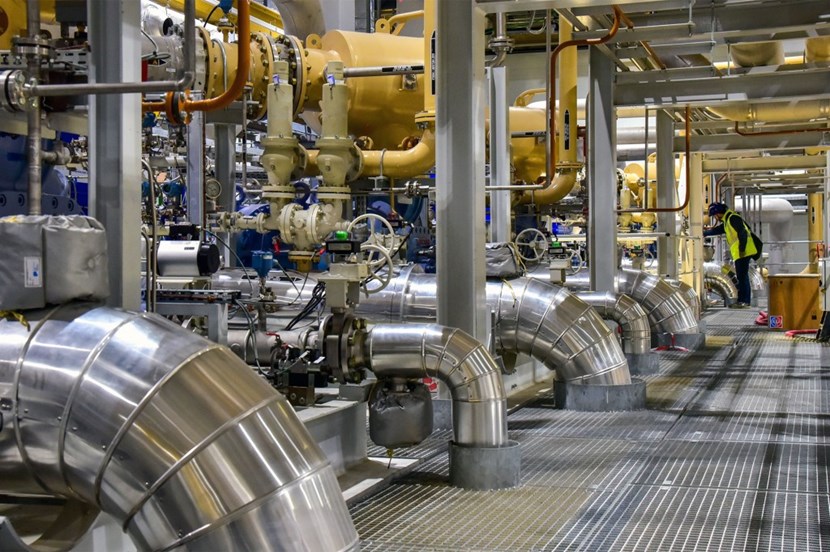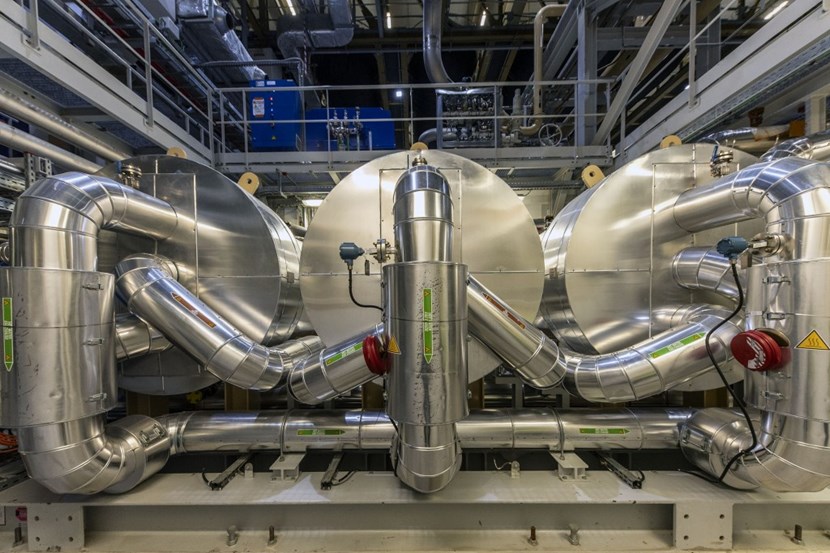
A total of 18 megawatt-class helium compressors, arranged in ''trains'' of six, bring gaseous helium to a pressure of approximately 21 bars and deliver it to the cold boxes. The considerable amount of heat generated by the process is recovered and used to keep the main facilities on the ITER platform at room temperature during the cold season.
In order to provide cooling fluids to the machine, ITER operates one the

Twelve additional heat exchangers are installed in the liquid helium plant to recover the heat generated by the helium compression process. Three are pictured here. Under the provisions of an incitement system to promote energy savings, the installation received an important financial subsidy from the French utility EDF.
When the liquid helium plant is fully operational, cooling water will come out of the compressors at a temperature of 100 °C and at a flow rate of approximately 2,500 m³ per hour. In the cold season, this flow will be diverted to the hot water boiler building, contributing 12 MW of heat to the ITER "central heating" system. And 12 MW is about all that is needed to keep the main facilities on the ITER platform at room temperature¹.







